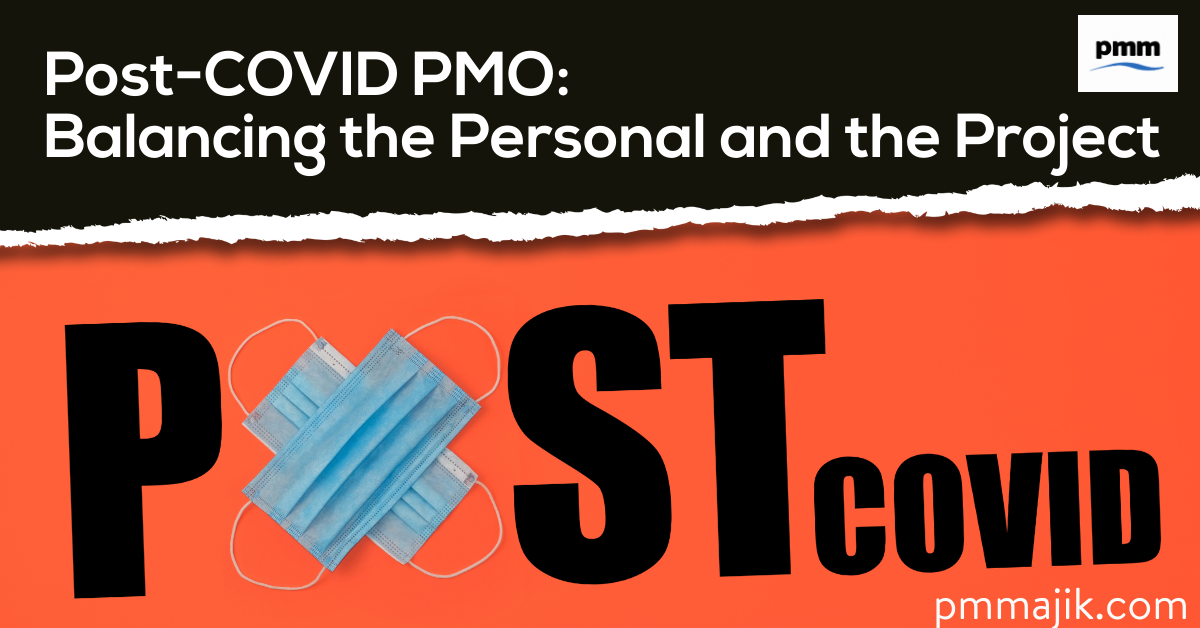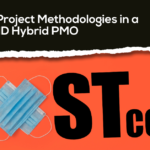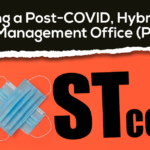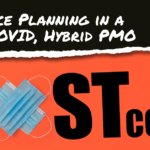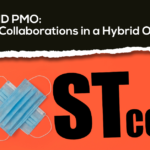As the world emerges from the bulk of COVID-related work and recreation restrictions, you’ll likely find your project management office (PMO) in a state of flux. With the move to hybrid working becoming the norm for many, how does the post-COVID PMO balance personal and project needs?
It probably only feels like a few short months ago, you were working out how to manage a fully remote PMO. Now you have to work out how to make a hybrid PMO work and how to support projects with a mix of working from home (WFH) and working from the office.
To help you get to grips with the shift in working, we’re exploring the challenges you’ll face and solutions to them. This time, we’re looking at balancing personal and project needs, covering:
- Why it’s important to facilitate working from home
- How hybrid working will impact projects
- How hybrid working impacts on personal needs
- Adaptations to help your PMO work with hybrid working
Why is working from home important for a PMO?
In a recent survey, 60% of workers who can work from home want to do so all or some of the time. Your PMO team and people working on the projects you oversee don’t want to be in the office full time.
What’s more, data shows that working from home delivers much more productivity – which is what your PMO is all about. Having a happy team will drive engagement and reduce staff turnover.
Indeed, 45% of workers say they would quit their job if they had remote working removed as an option. Having a balance of working from home or from the office is going to ensure you recruit and retain the best talent.
How does remote working impact on projects?
Depending on your industry, you may come across project challenges when it comes to remote working. The needs of a project can sometimes clash with the desire to have full-time remote working.
Even offering a balance of remote and office working can be a challenge; for example:
- In a construction company, site visits will still be needed for quality control
- In an IT business, there may be times the team need to come into work on servers
- In a product company, team members might be needed to test the UI of a limited number of modules
How does remote working impact on personal needs?
There are myriad reasons why people might want to work from home – to have flexibility with childcare, to optimise their working hours, or to eliminate their long commute.
However, most of the studies about working from home post-pandemic do suggest that people do want at least the option to go into the office. This means your PMO will need to have space for the team to be present and a way to manage in-person attendance if you cut floor space.
You’ll need to consider if core or office hours are necessary for the projects you work with and the style of communication in your office.
How can I adapt my PMO to hybrid working?
When considering your PMO and the immediate team you work with, it’s likely that the work can be done from anywhere – it’s data gathering and analysis, after all. You should work with your IT department to ensure device security, with elements like VPNs and secure cloud storage in place.
Supporting projects as hybrid working can become more challenging. You’ll need to adapt some processes, such as project planning. Your process for project managers (PM) to plan out and schedule each phase of a project will need to have a step to decide if the activity will require the resource to be on-site.
Also, at the start of a project, you will need to ensure the PM checks working from home and office preferences. This will feed into project planning and will also help with contingency planning. Being aware of what can contractually be asked from team members in terms of being present in the office, although I hope your PMs will never need to pull this out.
A PMO in the post-COVID world
Balancing the needs of projects against the needs of your people in a post-COVID PMO can be a challenge. You will need to assess processes – particularly with regard to planning – to make sure most scenarios are covered.
